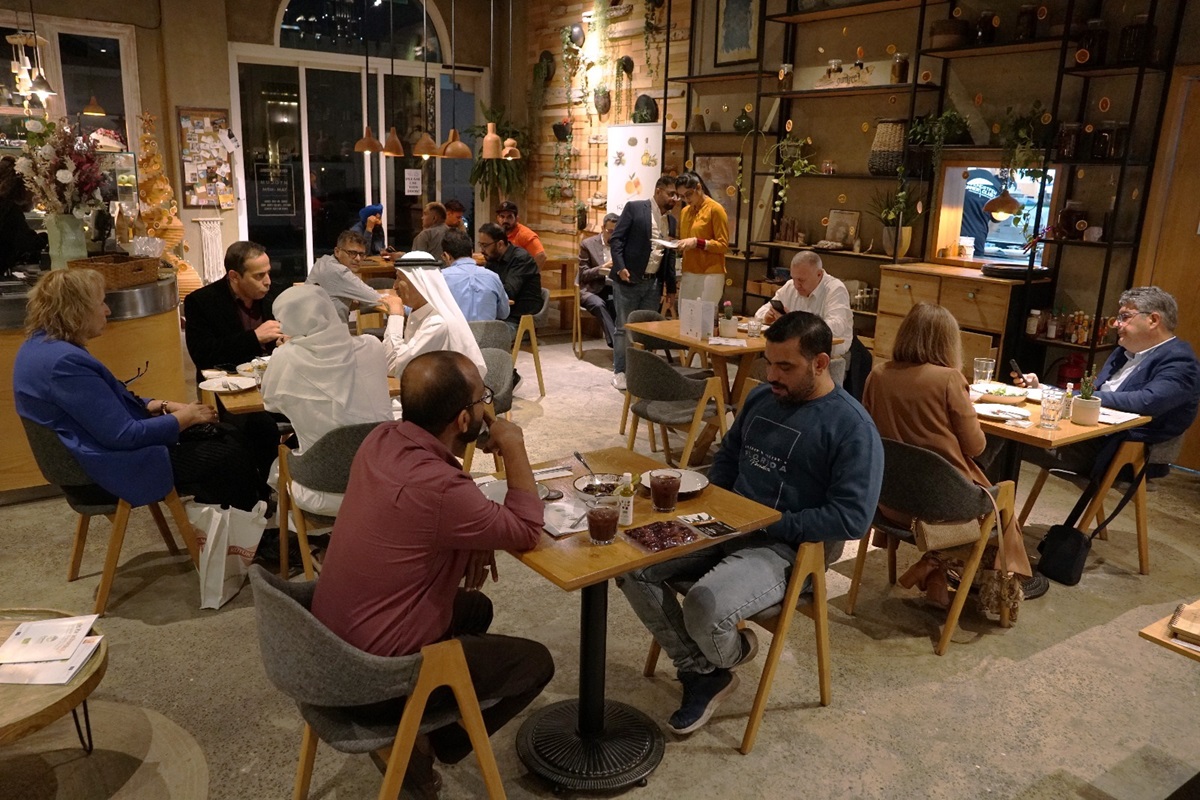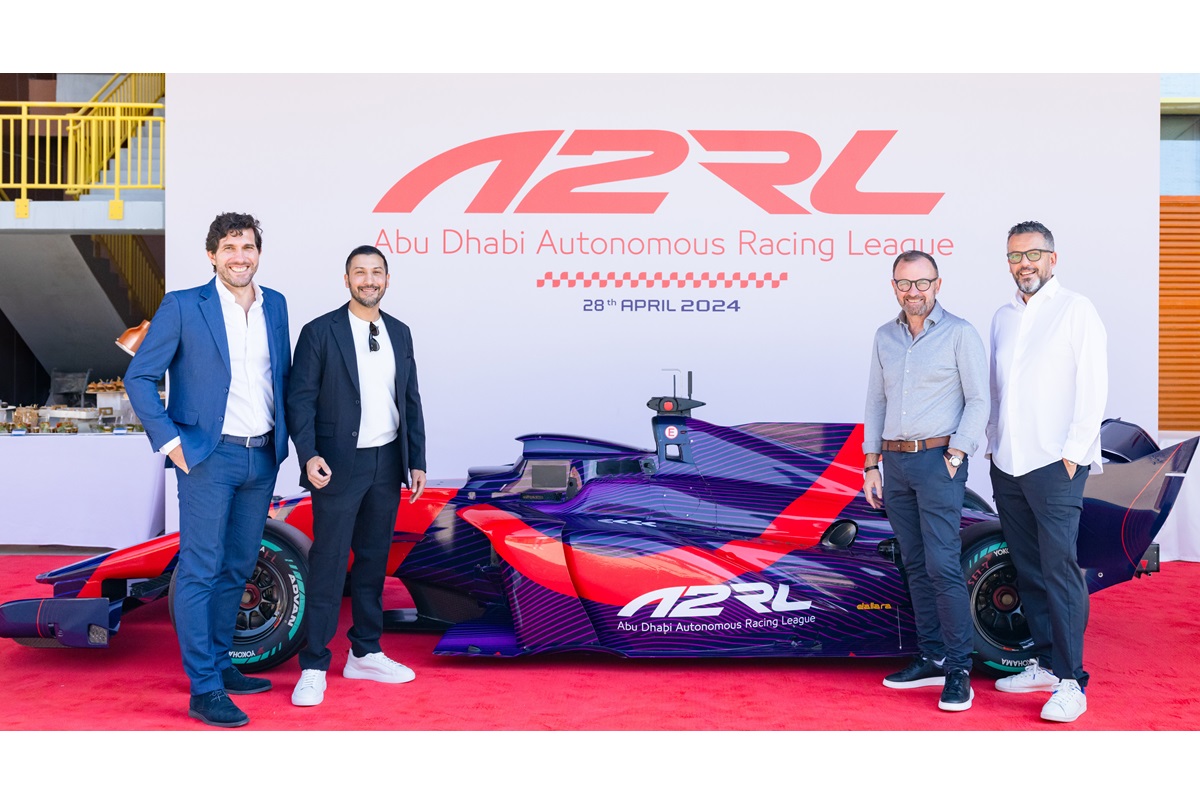For years, British artist Tom Young has been living and working in Lebanon, exploring the country’s rich history in his artwork. The painter has recently turned to capture the multiple crises Lebanon has experienced, from scenes of the October 2019 protests to the aftermath of the 2020 port explosion.
A recent anti-corruption campaign led by the Lebanese Transparency Association (LTA) saw it commission artworks by Young, featuring six mock Lollar bills printed from a custom ATM. In painstaking detail, each painting portrays a different form of corruption by the Lebanese government.
“This project was a way to engage on an artistic level, with the desire for change and the desire to hold these people accountable,” Young told Al Arabiya English. “It’s definitely a move away from my more romantic work. It’s got a harder edge.
“These pieces are dramatic moments in contemporary history which you will not find on any other banknotes,” he continued. “National banks use their banknotes to show off [their] national pride [but these Lollars] are classic Lebanese humor – dark, satirical and ridiculous.”
For the latest headlines, follow our Google News channel online or via the app.
A Lollar – a term coined by economist Dan Azzi referring to a ‘Lebanese Dollar’ – is an arbitrary exchange rate used by the Central Bank for nationally circulated dollar currency. It currently equals 8,000 LL per dollar, despite the parallel market reaching almost 39,000 LL per dollar last week.
The artwork behind the campaign goes beyond highlighting the devaluing lira and reminds viewers of the intertwined shortcoming of the state, which has led to poverty, financial collapse, and a barely functioning country.
The one Lollar bill features Young’s painting of an old railway steam train decaying at the derelict Tripoli-Mina station, rusted and overgrown with wildflowers. The image evokes Young’s previous 2019 exhibition on the abandoned Bekaa train factory in Rayak, once the most significant such factory in the Middle East, left to disrepair after the civil war.
“That one was quite clear, and maybe the most picturesque or nostalgic, but it does highlight what’s missing,” said Young. “It’s simply disgraceful, the ruin of the train network and the selling off of railway land, and all the taxes people are still paying for a rail network that doesn’t exist.
What’s interesting about all the paintings is that they’re all interconnected,” he added. “If there were a modern transport network now, there’d be less traffic on the roads, and we wouldn’t depend so much on petrol.”
The fuel crisis in Lebanon is the focus of the five Lollar bill painting, inspired by dramatic scenes of people and cars queuing – sometimes for hours or even days – to buy petrol and diesel. The illustration shows a seemingly endless line at a gas station in Jiyeh, the hazy brushstrokes evoking the blistering July 2021 heat – when severe shortages crippled the country.
While some in Lebanon have been protected from other aspects of the economic crisis by foreign currency reserves, none can escape the country’s fuel shortages. Violent clashes have occurred over limited supplies, exacerbated by massive price increases and accusations of fuel tampering.
“It was important for me that the paintings came from direct experience,” explained Young. “Living in Lebanon, I’m experiencing these problems too. I wanted to show people reaching out of their cars, shouting and jeering at each other, and people just in a state of melancholy defeat as well.”
Waste management is another endemic problem in Lebanon. In 2015, the Lebanese government failed to implement a replacement plan following the closure of landfill sites, resulting in waste piling up in the streets.
This still ongoing issue is reflected on the 10 Lollar note, which depicts a car and the distinctive triple archways of an Ottoman-era building drowned in a sea of refuse. It reflects the state’s inaction and the broader neglect of Lebanon’s cultural heritage.
“We’re still having garbage pile up, but I don’t think people have the energy to protest it anymore. There are so many crises. It’s overwhelmed them,” Young said. “I saw a car covered in rubbish in 2015, which seemed to be quite a symbolic image of a journey, but stuck going nowhere.
“I could see those piles of rubbish next to what was a lovely old 19th century Ottoman house in Gemmayzeh, which was badly destroyed in the blast,” he added. “This painting is kind of a combination of several issues affecting Lebanon, all having a knock-on effect on each other.”
The 20 Lollar note painting shows the 2019 Lebanon wildfires, which devastated huge areas across the Mount Lebanon region. There was no functional firefighting equipment to combat the blazes. The image shows stone pine trees – which Young has often depicted in serene pastel landscapes – engulfed in bright orange and yellow blaze.
Similarly, the 50 Lollar painting contrasts the Zouk Power Plant and the darkened cityscape of Beirut behind it with a single candle’s desperate, hopeful illumination. The facility recently stopped working due to aging machinery and lack of fuel, contributing to widespread power outages.
The most dramatic symbol of Lebanon’s suffering is reserved for the 100 Lollar note. Young’s artwork shows the massive rust-colored plume of the August 2020 blast erupting above the port grain silos, contrasting against the summer blue skies and peaceful city below.
“It was really difficult to go through and relive that moment in detail,” Young admitted. “I’d done paintings of the aftermath, but I’d never actually studied the blast itself until this painting, and it was something I never would have chosen to do.
“It was quite therapeutic and cathartic to do it,” he continued. “As I was painting it, it was almost like an act of prayer and meditation. It was a way to go deep inside the moment of pain, to try to transform it into something healing.”
The response to The Currency of Corruption campaign has been widespread, with inquiries flooding in from people asking where they can buy or attain the printed Lollars. The phenomenon raises a compelling point about their perceived value as a piece of artwork not lost on Young.
As part of the campaign, people were encouraged to try and use the mock Lollars as legal tender for purchases. Young was surprised to see shops accepting the bills as payment because they wanted them as pieces of art, which he signed for them.
“Paper money was only invented because gold was too heavy to carry in people’s pockets,” said Young. “They’re promissory notes. These notes are beautifully produced, limited-edition artworks of seminal moments in Lebanese history, so they have an intrinsic value.
“Imagine if these Lollars did become valuable; that might be an amazing way to give the people back their rights and savings. It’s very fanciful, but it’s an interesting idea.”
Young’s artistic practice has always had a social or political edge, engaging activism through art. The positive reaction to the campaign highlights a desperate desire for change in Lebanon – a desire Young echoes in his paintings.
“Part of being an artist is just about getting out of your own way, opening yourself up and being a channel for what’s going on around you, listening to other people’s sadness, trauma, and anger; channeling that into the work,” said Young.
“I think artists have a responsibility to respond to what’s going on at the time and to reflect, back to society, the truth of what is happening. You can’t just keep your head in the sand.”
Read more:
Saudi Arabia: Major artists to exhibit art installations at AlUla’s Arts Valley
Amid conflict, centuries-old tradition of pigeon keeping thrives in Kashmir
‘The ocean needs us,’ says Aquaman star Jason Momoa at UN conference

 World2 years ago
World2 years ago
 World2 years ago
World2 years ago
 Entertainment7 years ago
Entertainment7 years ago
 World7 years ago
World7 years ago
 Entertainment7 years ago
Entertainment7 years ago





